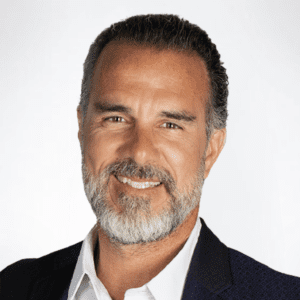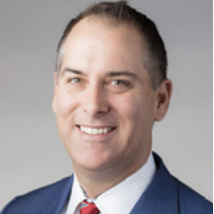Unscripted With Brian Ansay
In this installment, Brian Ansay, President, Specialty Physician GPOs, connects with Joe Baffone, Co-Founder and CEO of Annexus Health, for a conversation on easing the burden around securing patient assistance and financial relief and how that impacts a patient’s ability to get on and stay on the appropriate therapy.
ION Solutions continually seeks out partnerships for its membership that will provide the most value and most useful service and ease unnecessary administrative burden. In the fall of 2020, ION formed a strategic partnership with Annexus Health, the company behind the cloud-based platform AssistPoint®, that allows practices to search for manufacturer support programs and other foundation assistance programs in a single location. Hopefully, by finding synergies around data, technology, and service offerings, ION Solutions and Annexus Health will be able to offer providers, and their patients, unique value not found elsewhere.


Brian Ansay: Can you give us an overview of the services that Annexus provides and the value providers might see?
Joe Baffone: Annexus Health was formed with the patient in mind. So as an organization, we always come back to one thing that helps us make decisions: is this good for the patient? We believe we’ve created—and will continue to create—a technology offering and services offering that gives providers the tools to manage the patients’ care journey.
Right now we’re focused on access services and financial assistance cycle management. But ultimately we’re creating an enterprise platform to sit alongside the provider’s EHR, revenue cycle management system, practice management system, and—if you have a dispensing pharmacy—your dispensing software. We collaborate with those tools, but those tools aren’t meant to be used for the administrative logistics of managing the patient’s journey, which can be extremely burdensome.
While we started in the area of access services and financial assistance, we’re not only allowing for the discovery of valuable services for patients but also helping to manage that journey all the way through to completion.
We find what is available at that specific time for that specific patient and then manage the process. It may sound simplistic, but I can tell you what we do is massively different than anyone else in this space, and I would suggest that others aren’t doing it all: the full cycle necessary to manage assistance and get to fulfillment.
We see case after case where there is financial assistance that is approved and available but not being utilized. This could be for many reasons, but in a lot of cases, there is a significant amount of award that is going unutilized because practices don’t have the necessary tools to effectively manage everything.
Brian: What is the technology Annexus deploys? How do you specifically help the practices?
Joe: Our technology, AssistPoint®, manages every component of access services and all financial assistance that’s available. It also provides analytics and benchmarking that allows the provider to compare themselves to their peers so they can establish a baseline.
Something we’ve recently added—and have seen a lot of success with—is the Financial Assistance Billing report. This report shows what is actually being billed and shifted to the patient from their primary or secondary insurance when an award exists. For example, if the financial counselor went out and secured awards for a patient, but they’re not being utilized, we would have the ability to identify that and assist.
Brian: That is something that seems so simple but is oftentimes overlooked and can provide great value. What other functionality solves for some simple problems that practices might be losing sleep over?
Joe: We also have Financial Assistance Payment Aging reports. Again, this seems really simple, but really, no one else has the type of functionality to see if something is sitting out there for a long period of time. We all know it could have been very easily not billed, not billed correctly, or gone to the wrong place, so now we can provide visibility to that.
One of the really exciting things we do on the back end of these reports is identify opportunities where balances are shifting to the patient. These balances could be going to collections, they could be written off, or the patient could be paying them and going through a lot of pain to try to do that. We’re now able to help with that as well.
A final component of what we provide—for those interested in this level of service—is expert staffing to handle the entire suite of financial assistance services. Perhaps you need assistance with re-enrollment early in the year. Or maybe you’ve started using our technology and you need awards back-loaded. We have the staff to provide a robust service offering to you.
Ultimately, we’re providing service, technology, and data to alleviate provider and patient burden.
Brian: I’ve heard great feedback from practices who have integrated this service into their practice. Specifically, think about the growth we’ve seen in the number of new drugs in the market. Many practices, by utilizing these services, have been able to maintain their existing staffing levels and not lose any efficiency. Poor efficiency can certainly have a negative impact on the patient journey. So I think that’s a big win.
But when practices are looking at a potential partnership with you, what should they know about how the services you provide could have a positive effect on this patient journey?
Joe: That’s a great question because what it looks like now is vastly different from what it looked like a year ago. When we first approached the market, we really went out and described what we could do from a technology perspective. We were willing to step in and allow provider organizations to really fit the technology into their existing workflow. Fast-forward several years and we’re not only a technology and services company, but we’ve become a workflow company.
Having digested so many workflows over the years, we’ve been able to develop useful templates. We’ve developed best practices around the approach to effectively manage access services.
Oftentimes, we’re able to help shift practices from a reactive approach to a proactive one, to be able to examine the process—the bill that is going to the payer and then shifting to the patient. And then where the patient is struggling to pay that bill. We know there are gaps here and that many patients are dissatisfied. So we teach providers and practices optimal workflow to alleviate some of this patient dissatisfaction, oftentimes with existing staff.
For others, who just don’t have enough time in the day to effectively manage this, we take over portions of the process, or the whole process, so that they don’t need to worry about it.
Brian: What do you think the greatest benefit is for these practices? Are there any statistics that back this up?
Joe: We’re investing incredibly in data science. One of the things we’re working on is to establish a really good baseline to compare before and after, because unless we go into a provider organization and they’re willing to have us or have them back-load a specific period of time in awards, it’s hard for us to do the comparisons.
I can tell you that when we look at our data on the provider organization side, the things that continue to stand out to us is just purely and simply the opportunity for revenue capture with the co-pay cards, with a charitable foundation assistance that’s available. And what we target is approximately $100,000 to $200,000 in collections.
There are variables that affect this range, of course: patient volume, physician productivity, payer mix, patient economics, and in-office dispensing, for example. But I think that there is an opportunity to get well above that threshold, because as we get deeper, we’re finding that there are significant segments of patients that are not getting the intended therapy, they’re choosing not to get therapy, or they’re taking the therapy and not getting it the way it was intended. So, as we have greater visibility into this, we can work to solve it.
Brian: We know practices are having to scour multiple websites time and time again to find the information they need for their patients. When you look at all the therapeutics that have been launched over the last decade, it’s overwhelming and time consuming to identify and find this information. I think being able to go at a single point of contact to speed up this process and lift some of the burden in getting those patients on therapy more quickly, and giving the practices’ staff the confidence that they can track from diagnosis to award being distributed, is tremendous.
Joe: Part of the value equation is the compression of workflow and automation that occurs within our platform. Remember our three pillars: getting patients on the intended therapy, getting them on intended therapy quicker, and keeping them on the intended duration of that therapy.
We’re seeing really positive data points for all three of those objectives. Specifically, in terms of getting patients on therapy quicker, our directional data has shown a definite impact.
Brian: All very positive. Thank you for your continued partnership as we look to continue to provide valuable offerings to the ION membership.


